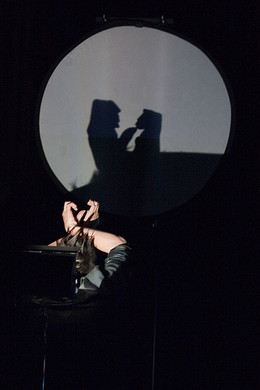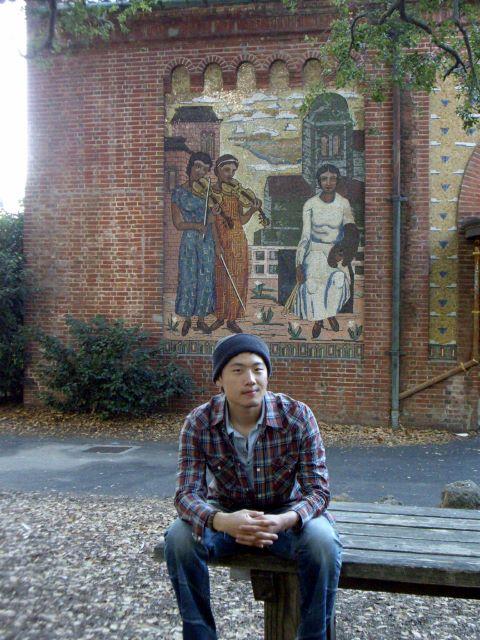Ideas Serving Humanity. The tag-line for the first TEDx SEOUL event, Ideas Serving Humanity is originated from Hongik'ingan, which can be roughly translated into
Speakers
Speakers may not be confirmed. Check event website for more information.
Jihoon Jeong
Where does the energy that opens up a new future come from? It comes from human beings.The infrastructure that encompasses all human energies will pave the way to the fundamental change that speeds up a new era of innovation. Real-time webs and social web technologies represent what we know for web 3.0 and they are a great infrastructure where human energy will manifest in a near future. Change is already happening. Convergence is happening from the perspective of the users and more powerful services are being demanded. The mindsets that once predominated product development, services, and organization management are changing. And more importantly, the values of firms and organizations are changing. Profit seeking structured behaviors are being designed for bigger values. And in core of those changes are humans. Many new and unimagined phenomena are now happening in the Korean society as human energy is exploding in different ways. And we will feel that vibrant and lively energy.Dongwon Hong
Many designers view their work from a global perspective. I do likewise. I have been communicating the potential of Hangul (Korean type) design through my work with Korean typography design, and so Hangul is obviously my obsession. Hangul has weak typographic foundations, and faces many difficulties since typographic methodology was imported and thus more tuned to western type. Still, Hangul has the potential to take its place as a globally recognized type if we can increase the quality of its geometry and communicability. There has been an active movement among designers who work on typography to rediscover its roots. There are geometric refinement stages that type goes through. Hangul design is getting there. Type is becoming more visual and increasingly meaning is being communicated visually. A key feature of Hangul is its precision. Each Hangul character has its unique phonetic attribute. Hangul can even express things that we can't pronounce. We can create symbols for sounds that don't exist and haven't been pronounced. The shapes are derived from the shape the tongue makes as it is pronounced, so visualizing it is easy. Hangul has a lot of potential.Chi-bok Song
If you want to communicate to change, you must remember the subject doesn't contradict itself. You then have to change the angle. When you view a subject from many different angles you form a deeper appreciation. The subject itself gets to see aspects that it was unaware of. When that happens, you start to experience attraction to that subject. If you want to move a lot of people in a short space of time, you must have attraction. A new test forms out of attraction. For example OB Beer was the textbook among beers. They had an absolute dominance in the market. As we were working through the ad campaign for Hite Beer, we could only achieve number one if we could create a new test with a new truth. The new truth lay in the 'water'. Does the quality of the water affect the taste of the beer? This is an new aspect of beer that no-one had considered until then. 'Beer made from 100% natural groundwater'. This propelled Hite Beer number one in just 3 month. The presidential campaign of Roh Moo-Hyun had a similar situation. At that time the issue revolved around, 'who is presidential material?' I changed that to 'who can best serve the people?' We formulated 'The people's president' and 'Think twice and you see Roh Moo-Hyun'. Trying to view the subject from another angle, trying to make attraction, these are attitudes I consider to be at the heart of the creative.Bill Dresselhaus
Every time I conduct a student project or professional workshop on design thinking and design process, especially with participants with non-design backgrounds, the results in both the outcomes and the human potential are like magic: it simply works every time and is extremely exciting and inspiring for everyone, especially for myself. I believe that design is a natural, innate human need, ability and activity that we must draw out, foster and develop in everyone for designing a better world. The current trends of comprehensive design thinking, participatory design and the democratization of design are right on target. It is now the task of design educators and trained designers to facilitate and coach that revolution with educational design experiences for all ages.Yeonho Oh
We would like to announce a break from 20th Century journalism which has be built by career journalists working for traditional news media. The current news culture only works one-way. It is monopolistic and exclusive. Now every citizen can participate in the creation of news, and we seek to create a new news culture with new news for a new world. This is especially meaningful for Korea, where the news has historically been dominated by conservative voices, now we can create a news media playing field with balanced representation from both the conservative and progressive camps.Chang W Kim
Ten years ago, Korea was an innovation powerhouse in the web industry -- The country was filled with entrepreneurship and was churning out some of the most interesting web services before any other countries did. But these days Korea-born innovations are hard to come by. On the contrary, some worry that Korea might be becoming "internet Galapagos", inflicted by walled gardens and lack of entrepreneurial spirits. What happened, and what should Korea do? Are there any signs of hope we can find?Seungbum Kim and Haejin Jung
It is hard to transform the state of the medical examination in Korean society without reforming the way that society understands the medical profession, its culture and its underlying perceptions. One needs to provide an alternative that takes all these factors into account. The term "humane medical examination" may sound a little fuzzy, but we are working through these issues on a day-to-day basis. In our General Doctor practice we show our view of the whole situation. In our practice, we strive to establish an alternative to existing patient-doctor relationship, one that is founded on intimacy and communication. We define our own 'medical practice design', and we base our choices on its principles. In order to create the most humane patient experience through design, we try to restructure the environment, tools and communication in a consistent and meaningful way. The General Doctor Cafe tries to tackle the environment and communication design aspects. In order to bring the medical care environment into alignment, one can question the elements that compose the space we called the hospital by making it look like a cafe or a normal home. A new design in the way that the doctor and patient communicates is a natural by-product of changing the environment. Other considerations may include patients recording their own notes about their conditions, appointment system allocating a full 30 minutes per patient, and even having a pet cat. These things are all a part of our exploration, as is our idea for a stethoscope doll. We took apart the elements and activities that compose a stethoscope experience, and as we were rethinking how to make it more patient-centric, we discovered a simple doll that could transform an cold activity that scare kids into a game that actually involved the kids.Eungyeol Lee
At the young age of 21, he became the first Korean magician to perform abroad. In 2003 he was the winner of the World Magic Seminar held in Las Vegas, and in 2006 he was first Asian to place first at the World Magic Olympics. Since then he has been awarded countless major prizes proving the potential of Koreans on the global magic scene. Korean magic has since enjoyed a boom growing from about 20 professionals when Lee started to to about over 2000 today. In Korea he also established a creative new performance form called Magic Concert partnering with media artists to break out of the "performing tricks" stereotype to challenge the boundaries of artistic expression. He has already made numerous contributions to the Korean magic history and continues to magically challenge the impossible.Dujin Hwang
[For Korea] 20th century saw a severe battle of self-denial. It jumped from being deeply embedded in Confucian tradition to a country whole-heartedly embracing western modernization, which is quite rare situation. As we look back, this entailed a fair share of loss, but it also required great courage and determination, and through it, Korea emerged as a strong member of the global community. However we are still learning how to reconcile our history and present. Contemporary Koreans can be grouped into 3 types: 19th century-type who those who dwell in the past, 20th century-type who live without knowing what is truly ours, and 21st century-type, which includes traditional musicians such as Lee Ja-Ram, who embrace both the past and the present. This struggle is something many Asian countries have in common. Given KoreaJaram Lee
Pansori is a performance art. You cannot simply classify it as music. The main strength of pansori lies in its ability to playfully open up and unpacks stories of how one view their generation. Only when it functions in this way can it be fully called pansori. Today's pansori has faithfully maintained its legacy under the name of 'tradition', however in order to 'preserve' it, it has been established as a form, at the detriment of losing its storytelling function. In the past, pansori functioned to give release to those who heard it, today's pansori needs to be a sounding board for the 'here and now'. I do not want pansori to become marginalized but become a popular culture that continues to be loved. However I do not want contemporary pansori to be contaminated or confused with fusion. There are those who half-nakedly perform half-baked works under the guise of fusion. I consistently get calls for fusion performances. Each year I find myself in a continued battle against bias, ignorance and money. The way I want pansori to survive is different. Pansori needs to break free from the grip of formalism and I have tried earnestly to retain its ability to communicate, which I believe is being true to its tradition. I want to focus on pansori's storytelling ability. The importance of song or performance lies in its ability to comfort pain and uplift in the midst of people coming together. Pansori is a music, a performance, a gaze and a story that heals.Organizing team
-
Hanseok Ryu
Founder, Licensee -
Namho Park
Chief Advisor -
Seongtae Park
Curator -
Yujin Lee
Evangelist -
Sunhwan Bae
Event Production -
Taekyung Kim
Marketing, Public Relationship -
Silvia Cho
Finance, Account Management -
Inhyuk Song
Website Development -
Jisoo Lee
Content Management -
Mark Whiting
Advisor -
Inho Kwak
Event Production -
Aram Lee
Speaker Relation -
Miryoung Lee
Content management -
David Lee
Advisor -
Joanne Kim
Advisor

